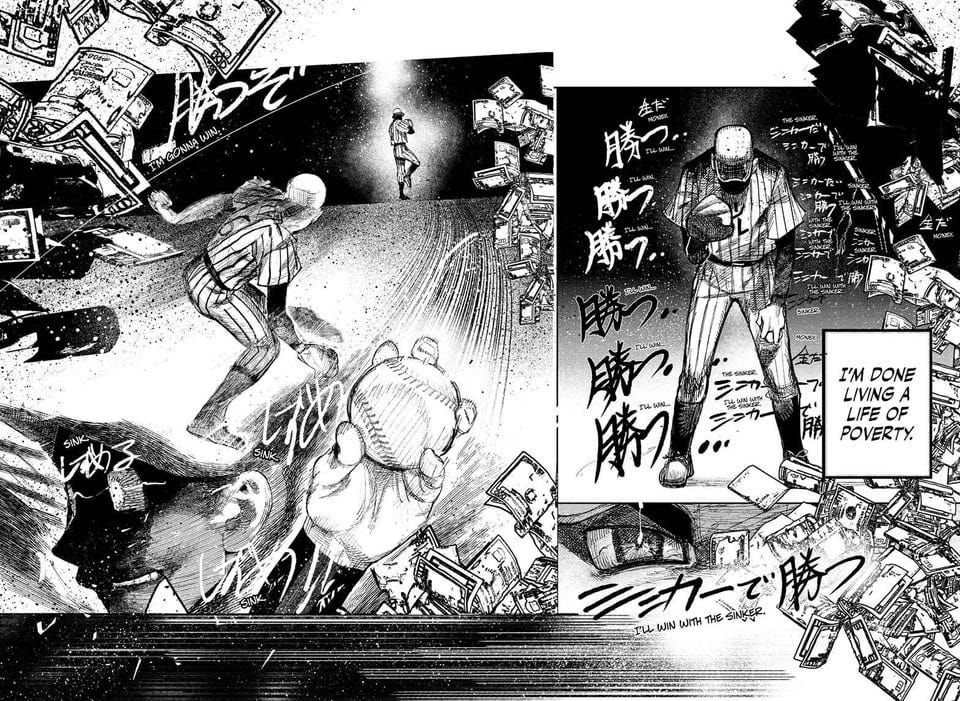Today, I’m going to talk about one of my favorite currently serialized manga series: Choujin X by Sui Ishida.
Three years after Tokyo Ghoul:re finished publication in summer of 2018, Sui Ishida picked up his G pen once again to draw a new story—the premise of which was strikingly similar to that of his previous manga.
For context, Tokyo Ghoul is about a high school boy named Kaneki who goes on a date with a girl named Rize, who turns out to be a human-eating ghoul. In this world, humans and ghouls live side by side and are undistinguishable from one another most of the time. As Kaneki is walking Rize home from their date, Rize reveals herself as a ghoul and is about to eat Kaneki when both of them are crushed under thousands of tons of concrete cylinders in a freak accident. They’re both taken to the hospital, and—get this—they transplant parts of Rize’s organs to Kaneki so that he can survive his wounds, turning him into a ghoul in the process. He then must reckon with his newfound hunger for human flesh along with the broader implications of switching his life from the human side to the ghoul side of society. Everything was once black and white; now it gets muddled to grey.
Now, compare that with the premise of Choujin X: Tokio Kurohara is a high school student living in a world where certain individuals can transform into "choujin” (超人, basically “superhumans”), who are beings endowed with extraordinary abilities. Tokio and his best friend, Azuma Higashi, are just normal humans, but they find themselves in a deadly fight when they're attacked by a choujin. In a desperate bid for power to protect the both of them, Tokio injects himself with a serum they find that transforms him into a choujin. Unlike the typical heroic transformations seen in other stories, Tokio's new powers come with a heavy burden. He must now navigate the challenges of his newfound abilities, the shifting dynamics of his relationship with Azuma, and the broader implications of Choujin in society.
Sound similar at all?
I thought so too, and I applaud Ishida for what he’s doing here. He’s sticking to what he knows. Sui Ishida knows better than anyone how to write a story about a passive main character (who can see things from many perspectives), and to throw him into the heat of a society-wide conflict—and he’s incredible at developing that character within that environment, both in terms of powers and his internal world. And even though the premises of the two stories are similar in some ways, the results are totally different.
Also, an important note—Ishida finished Tokyo Ghoul:re on a sour note, both with fans and with himself; after publishing the final chapter, he wrote an afterword to his readers that explained his general discontent while writing the series:
“I took on impossible amounts of work to try to push myself.
I think it was because I was trying to get closer to Kaneki who’s been subjected to torture.
I’ve developed complications in my body.
I was scared at first. But after seeing all sorts of symptoms show up every few months, I resigned myself to the fact that this was the kind of body I had.
The most striking part to me was that I lost my sense of taste.
No matter what I ate, everything would taste the same. Even though the symptoms were different, I felt like I’d turned into a ghoul.
I was surprised by the extent to which the human spirit is tied to the body.
There may be some readers who are disappointed by this, but I haven’t thought of drawing Tokyo Ghoul itself as fun. I hate working.
“Why am I drawing manga?”
These doubts grew ever more in my mind.”
-Sui Ishida
Brutal. Man, was I sad to read those words—sad that the author of a beloved series didn’t like writing it, sure, but more just heartbroken for the man himself.
Fast forward three years, and he’s writing a new series. I was nervous to hear it at first. Would it just be a repeat? But no—it turns out that he’s writing Choujin X at his own pace, publishing chapters when able. And most of the time, that has looked like a monthly release instead of a weekly release. Still a ton of work (with 40-50-page chapters instead of 20 pagers), but far more sustainable.

And Choujin X is fun. Like, really fun. Part of that is because it’s a different genre than Tokyo Ghoul, one that’s made for comedy and light heartedness, but I like to think it also means Ishida’s having more fun writing this series.
Like, look at the package choujin. His power is putting people in cardboard boxes.
It’s the series’ ability to effortlessly switch back and forth from absurdity and lightheartedness to heavier tones that makes it such a strong read for me.
I’ll probably write more about this series, so consider this a part 1 for now.
Thanks so much for reading, and I’ll catch you next time.
-Blake Steen








